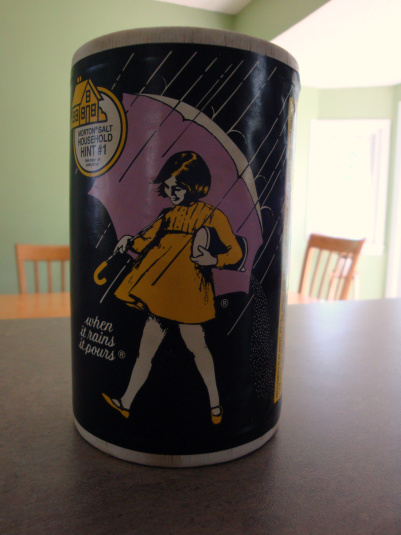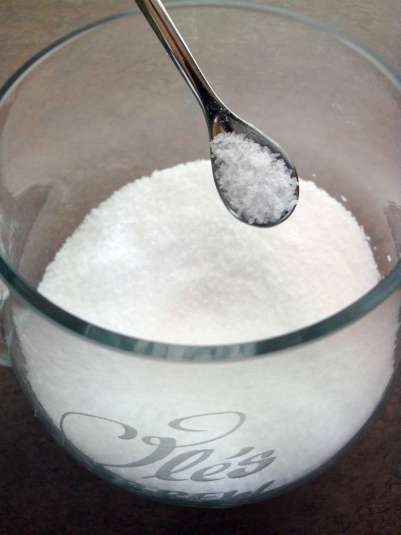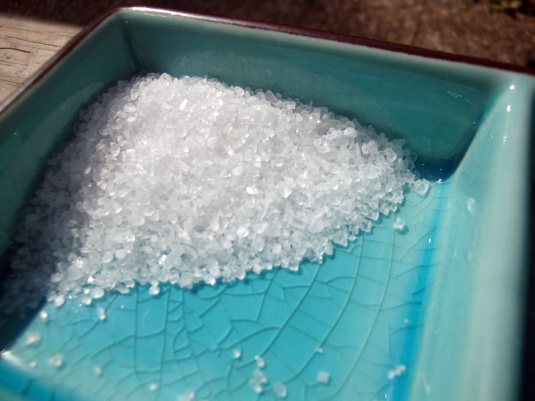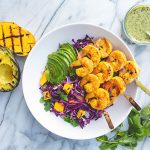Have you tried to buy salt lately? The aisle has been overrun by grinders, Mediterranean sea salt, Celtic salt, pink Himalayan salt, kosher salt, the familiar iodized and many others. Cooking shows and recipe books specify “kosher salt” and “sea salt,” and there are even restaurants focused around one specific type of salt. How do you know which salt to use when in your everyday cooking?
We typically have three varieties of salt in our house for cooking purposes: iodized table salt, kosher salt and sea salt. We also have pickling salt on hand for when Ole brines meat for the smoker, but it’s not used in our everyday cooking. These are just the basics, and I’m barely scratching the surface with the amount of information and the different varieties of, say, sea salt that are available, but this gives you a rough guideline and a place to start if you’re looking to expand your salt box.

This is probably the salt you’re most used to, the stuff found in salt shakers on restaurant tables, in the tiny, white paper packages served on airplanes and on condiment bars. It has a fine grain, making it preferred for baking because it dissolves and distributes evenly. In 1924, the United States government started adding iodine to salt to reduce the cases of iodine deficiency that led to things such as goiter an other thyroid issues. While most American diets contain sufficient iodine through foods such as seafood, milk and dairy products and strawberries, iodine is still added to most table salts.

These flakes lend themselves well to pinching and brining. It is also used in the preparation of Jewish meats. Because of their size, the granules do not measure the same as table salt. A good rule of thumb is about 1 and 1/2 teaspoons of kosher salt to 1 teaspoon table salt. Diamond Crystal is slightly coarser than Morton’s and the measurement will be a greater ratio, closer to 2:1.

Sea salts are made from – wait for it – seawater. They contain minerals from the sea they came from, giving them color and flavor. However, that flavor is gone when the salt is dissolved and cooked. You can find sea salts in coarse and fine grinds, and they can add flavor to meats and desserts alike. The measurement conversion is dependent on the size of the crystals, which is most easily found by weight.
Reader Interactions
Trackbacks
-
-
[…] Read More… […]
-
[…] beautiful, well organized and it has great topics like Manic Organic which features articles like The Truth about Salt and great supermarket tips and strategies. Going Green is great for gardeners or those who love to […]
Leave a Reply
You must be logged in to post a comment.






[…] Read More… […]